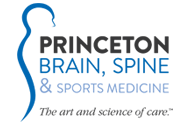High School Pitcher Back on the Mound After Innovative, Non-Surgical Treatment of UCL Tear

High school junior Nicholas Lennon has been playing baseball since he was 6 years old. When he began to experience elbow pain that wouldn’t go away, he turned to Princeton Brain, Spine and Sports Medicine for help.
Nicholas, 16, a pitcher and outfielder, plays baseball for Howell High School and is also active in a travel baseball league and local baseball academy. And while all of this time on the field has allowed him to hone his skills, it also led to intermittent elbow pain.
In 2020, an MRI of Nicholas’s right elbow showed inflammation, so he rested the joint. Once the pain stopped, he returned to the field. However, the pain gradually returned in 2023. Another MRI and a series of X-rays revealed a partial tear of the ulnar collateral ligament (UCL). “My elbow has had so much stress these past few years,” Nicholas says. “I feel I suffered from being shut down for months at a time. I would go back to playing and feel good for a short time, and then it would hurt again, so I would rest it.”
“Sports injuries are very common in high school,” explains internist and sports medicine physician Dhimant J. Balar, DO. “We see overuse injuries, sprains, strains and tendonitis of the elbow, shoulder, knee and ankle.”
Defining a UCL Injury
Found on the inside of the elbow, the UCL attaches the humerus (upper arm) to the ulna (forearm). A tear of the UCL can make the elbow unstable. Symptoms include pain on the inner side of the elbow or a “popping” sensation after throwing, followed by intense pain. In most cases, the UCL is damaged by repeated stress from overhead movements, such as throwing a baseball. The most common UCL injury is a gradual tear, like in Nicholas’s case, but the ligament can also be injured in one traumatic moment.
“Often, in pediatric elbow injuries, the issue has little to do with the elbow,” Dr. Balar explains. “It’s really due to biomechanical problems elsewhere, such as lack of flexibility or strength in certain muscle groups, poor mechanics or improper technique. The body compromises for the deficiency, which causes stress in other areas.”
Treating a UCL Injury
Treatment for a UCL tear ranges from rest and physical therapy to surgery, depending on the extent of the UCL tear and your health goals.
Princeton Brain, Spine & Sports Medicine provides elite, non-surgical expertise for competitive and recreational athletes, fitness enthusiasts and active individuals of all levels and ages. Our practice’s first priority is educating patients about injury management and prevention. Then, Dr. Balar partners with the patient, physical therapists and other specialty clinicians to develop tailored, customized treatment plans for each patient to manage pain, rehabilitate injuries, improve mobility and restore function.
“By the time most patients come in, they’re already injured, so we focus on helping the patient and the parent understand their roles in the injury and teach them how to prevent or lower the chance of reinjury,” Dr. Balar says. “A good provider will spend time doing both, giving the patient and his or her parent the proper tools to heal now and prevent injury later.”
Our sports medicine experts use conservative treatments like rest, bracing, exercise, physical therapy, injections or medications to treat the condition whenever possible. When five weeks of rest didn’t alleviate Nicholas’s pain, Dr. Balar treated the injury with an innovative combination of platelet-rich plasma and amniotic fluid.
In platelet-rich plasma therapy, a patient’s blood is drawn and separated with a centrifuge, which increases platelet concentration. This platelet-rich blood is combined with other blood from the patient and injected into the injured area to accelerate healing. This therapy increases the amount of hormones, called growth factors, in the injured area. Research shows that platelet-rich plasma can hasten healing and decrease pain. Nicholas also received amniotic fluid therapy. This approach injects harvested amniotic membrane cells, growth factors, antibodies and other substances found in amniotic fluid at the injury site to help stimulate healing.
After treatment, Nicholas rested the joint for two weeks before gradually increasing his workload at physical therapy. Therapy focused on flexibility, strengthening his shoulder muscles and proper body mechanics.
“Dr. Balar said that if I had no pain, I could start a slow back-to-throwing program, which he explained to me,” Nicholas explains. “Over the next month, I slowly got back to throwing normally, then advanced to pitching in the bullpen.”
“As many as three out of 10 throwers experience at least a partial UCL tear,” Dr. Balar says. “With comprehensive non-surgical therapies, most can heal in two to three months. If surgery is needed, it can take more than a year to heal from the injury fully.”
Nicholas was cleared to pitch midway during the most recent high school baseball season but chose to play left field instead.
I’m so grateful for Dr. Balar because if he hadn’t recommended these treatments, I don’t think my elbow would’ve healed on its own, and I probably wouldn’t have been able to play this season,” he says. “I’ll be pitching for summer travel baseball, which starts in a few weeks. I’m looking forward to getting back on the mound. My arm and elbow haven’t felt this good in I don’t know how long.”
